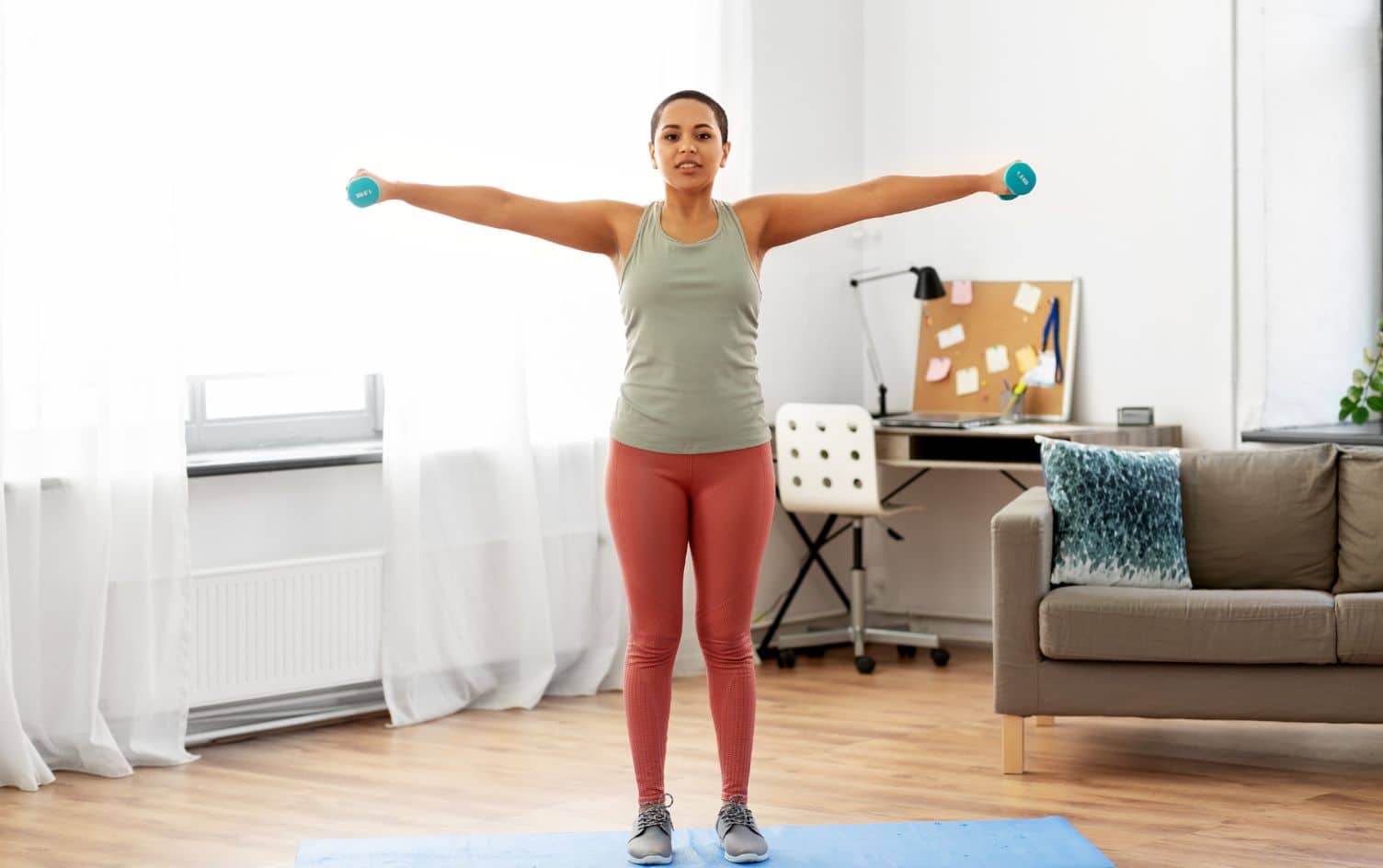As we age, our bodies are subject to a certain amount of muscle loss, in a process called sarcopenia — and you don’t need to be at the age of “gray hair don’t care” to see it happening. For most people, sarcopenia starts in their 30s and the decline can lead to up to 30% muscle mass loss over a lifetime.
That can have significant effects, especially more weakness and less mobility, a combination that contributes to increased risk of falls, injuries and fractures. Even for those on the younger side, this weakness may have a ripple effect by encouraging sedentary behavior. Basically, you feel muscle fatigue more quickly, so you take it easy, boosting your chances of more muscle loss as well as weight gain.
But there’s good news, because what was lost can be found again. Not only can you significantly slow the decline of muscle loss, but you may even be able to reverse it to some degree. And it doesn’t take powerlifting sessions to get it back.
HIIT THE GYM
According to a recent study, high-intensity interval training (HIIT) improved age-related decline in muscle mitochondrial activity, which means the mechanism used by muscles to generate energy improved in study participants who did HIIT, even for those who were in the 65–80 age group.
HIIT involves short bursts of intense activity paired with lower-intensity recovery periods. This can take many forms, from HIIT classes where you lift heavy objects quickly, to training sessions with plenty of burpees. The key is the timing of exercises and recovery, to train your body to give maximum effort on a short-term basis.
It works because during HIIT, chemical channels in the muscle cells have to adjust how they regulate calcium to compensate for higher energy production. That makes your muscle cells work more efficiently, in a way that’s similar to how they operated when the cells (and you) were younger.
BEYOND MUSCLE GAIN
As you improve muscle cell activity, you’ll be doing every other system in your body a favor as well, because HIIT — as well as endurance exercise like running, swimming, cycling and cross-country skiing — can be beneficial for other cells.
In a study published in the European Heart Journal, researchers discovered HIIT is even better for cellular aging than resistance training. But, of course, integrating both into a workout schedule has the best effects of all, according to the study’s co-author, Christian Werner, PhD, of Saarland University in Germany.
Why care about your cells? Because they are big-time indicators of overall health in aging, Werner says. Your DNA is organized into chromosomes capped by telomeres, which has often been compared to the plastic tips at the end of shoelaces. As we age, the telomeres shorten naturally, but the more you can slow down the process, the better it will be for your cells, since they’ll be more resistant to stress and inflammation, two components that can age you at a faster rate.
Another recent study noted that a higher degree of cardiorespiratory fitness — which you can increase through regular HIIT sessions — is associated with more longevity. That you means you have a higher chance of extending your life by adding this type of activity into your regular schedule. Part of the reason for these results may be that people who embark on HIIT and endurance exercises tend to develop healthier habits overall, says Dr. Sean Heffron, preventive cardiologist at NYU Langone Health.
“As you increase your fitness, that often leads to benefits in other ways, like eating healthier foods, sleeping better, having more energy overall and being less stressed,” he notes. “It all adds up and contributes to better health as you’re aging.”
HOW TO GET STARTED
If you’re ready to get younger on a muscular and cellular level, then great, but if you’re new to HIIT workouts, be sure to ease in slowly to prevent injury, advises Keith McNiven, director of Right Path Fitness, a London-based personal training firm.
This might be as easy as incorporating some mini-workout moves into your day to get your heart rate up. For example, sprinting up the stairs between meetings or doing squats quickly as you’re brushing your teeth.
“These activity boosts can help acclimate your body to increasing energy levels, blood flow and oxygen intake,” McNiven says. “That will be helpful for when you do a full HIIT workout.”
He adds that HIIT can be done just two or three times a week — and can even be done in about 10 minutes — to see benefits like greater muscle gain, more endurance and higher cardiorespiratory fitness.
You may not be able to stop Father Time in his tracks, but incorporating this high-energy workout style into your routine could slow him down a little.





One Response
Great article….I’m a little disappointed that the athletes are pictured using a knockoff of a great product created by Marc Lebert, a popular fitness trainer and influencer around the globe called the Lebert Equalizer. It would be nice to see support of our industry and credit given where it’s deserved.